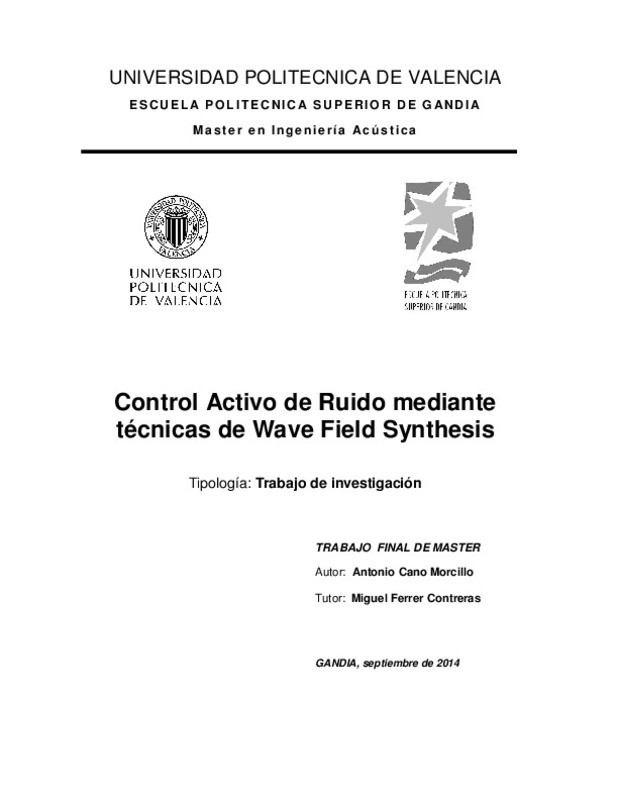JavaScript is disabled for your browser. Some features of this site may not work without it.
Buscar en RiuNet
Listar
Mi cuenta
Estadísticas
Ayuda RiuNet
Admin. UPV
Control activo de ruido mediante técnicas de Wave Field Synthesis
Mostrar el registro completo del ítem
Cano Morcillo, A. (2014). Control activo de ruido mediante técnicas de Wave Field Synthesis. Universitat Politècnica de València. http://hdl.handle.net/10251/44936
Por favor, use este identificador para citar o enlazar este ítem: http://hdl.handle.net/10251/44936
Ficheros en el ítem
Metadatos del ítem
| Título: | Control activo de ruido mediante técnicas de Wave Field Synthesis | |||
| Autor: | Cano Morcillo, Antonio | |||
| Director(es): | ||||
| Entidad UPV: |
|
|||
| Fecha acto/lectura: |
|
|||
| Resumen: |
The aim of this work is to apply the techniques of Wave Field
Synthesis (WFS) into Active Noise Control (ANC). It aims to generate a
simulation environment which allows to study the possibilities of WFS
systems from ...[+]
El objetivo de este trabajo es aplicar las técnicas de Wave Field
Synthesis (WFS) al Control Activo de Ruido (Active Noise Control, CAR o
ANC). Se pretende generar un entorno de simulación que permita estudiar
las ...[+]
|
|||
| Palabras clave: |
|
|||
| Derechos de uso: | Reconocimiento - No comercial - Sin obra derivada (by-nc-nd) | |||
| Editorial: |
|
|||
| Titulación: |
|
|||
| Tipo: |
|
recommendations
Este ítem aparece en la(s) siguiente(s) colección(ones)
-
EPSG - Trabajos académicos [5005]
Escuela Politécnica Superior de Gandia







